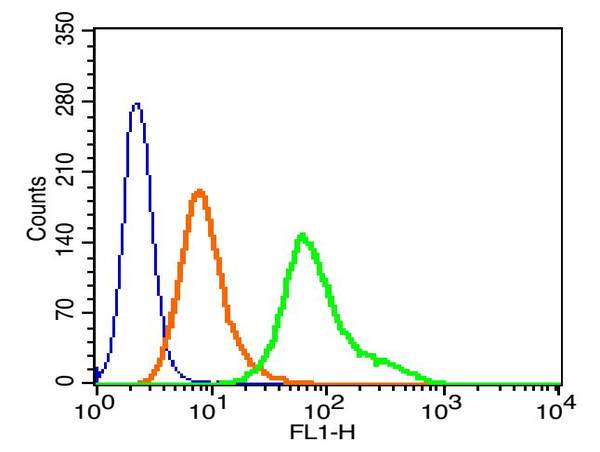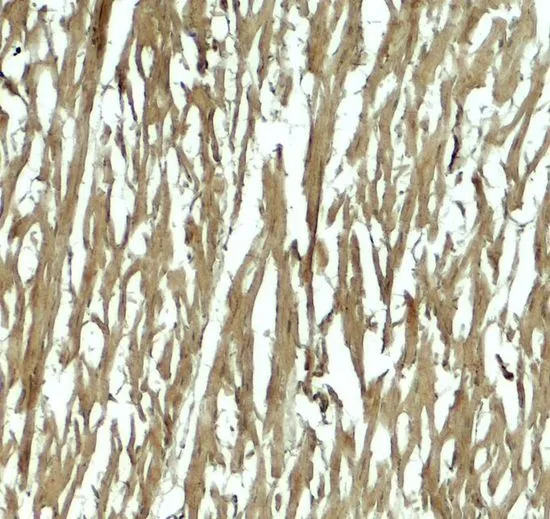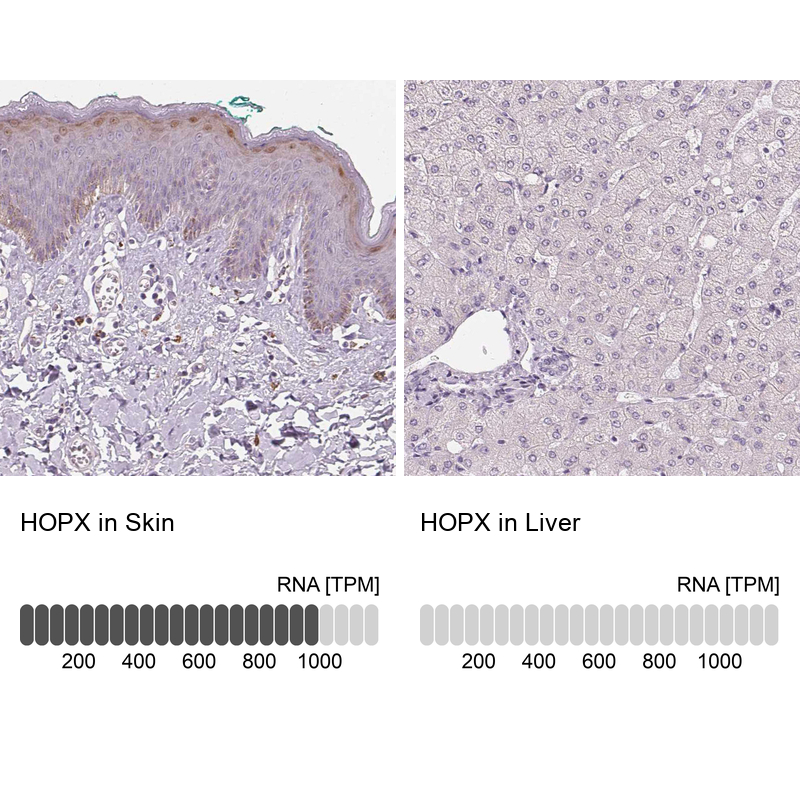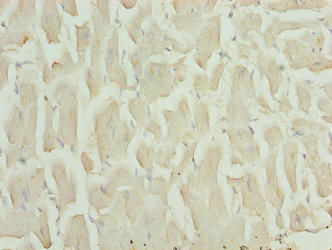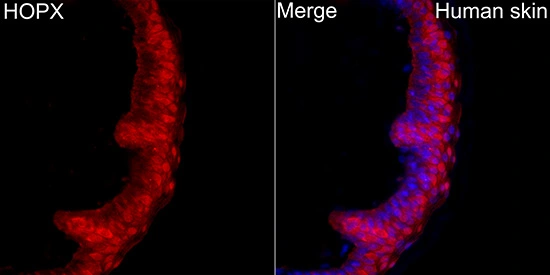
IHC-P analysis of human skin tissue using GTX66394 HOPX antibody. Orange : Primary antibody Blue : DAPI Antigen retrieval : high pressure antigen retrieval with 0.01 M citrate buffer (pH 6.0) Dilution : 1:200
HOPX antibody
GTX66394
ApplicationsWestern Blot, ImmunoHistoChemistry, ImmunoHistoChemistry Paraffin
Product group Antibodies
TargetHOPX
Overview
- SupplierGeneTex
- Product NameHOPX antibody
- Delivery Days Customer9
- Application Supplier NoteWB: 1:200 - 1:2000. *Optimal dilutions/concentrations should be determined by the researcher.Not tested in other applications.
- ApplicationsWestern Blot, ImmunoHistoChemistry, ImmunoHistoChemistry Paraffin
- CertificationResearch Use Only
- ClonalityPolyclonal
- ConjugateUnconjugated
- Gene ID84525
- Target nameHOPX
- Target descriptionHOP homeobox
- Target synonymsCAMEO, HOD, HOP, LAGY, NECC1, OB1, SMAP31, TOTO, homeodomain-only protein, lung cancer-associated Y protein, not expressed in choriocarcinoma clone 1, odd homeobox protein 1
- HostRabbit
- IsotypeIgG
- Protein IDQ9BPY8
- Protein NameHomeodomain-only protein
- Scientific DescriptionThe protein encoded by this gene is a homeodomain protein that lacks certain conserved residues required for DNA binding. It was reported that choriocarcinoma cell lines and tissues failed to express this gene, which suggested the possible involvement of this gene in malignant conversion of placental trophoblasts. Studies in mice suggest that this protein may interact with serum response factor (SRF) and modulate SRF-dependent cardiac-specific gene expression and cardiac development. Multiple alternatively spliced transcript variants have been identified for this gene. [provided by RefSeq, Feb 2009]
- Storage Instruction-20°C or -80°C,2°C to 8°C
- UNSPSC12352203


